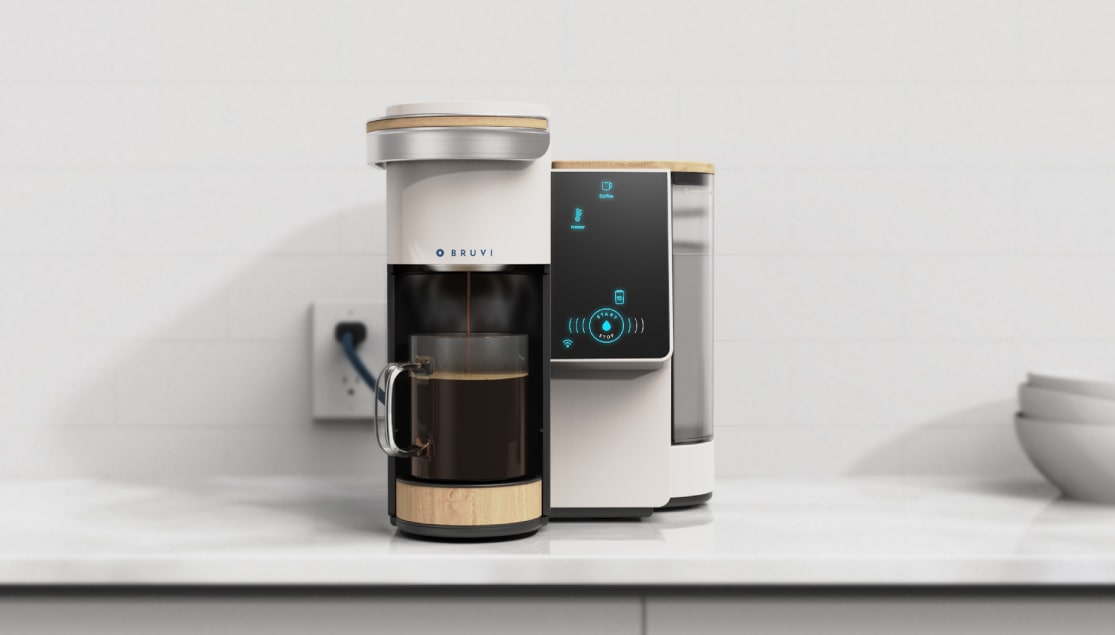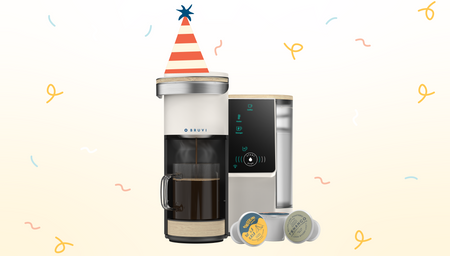Why Bruvi® Believes In The Coffee To Water Ratio
Great coffee is really as much science as it is art. It’s actually quite simple: if you start with specialty coffee and brew with set parameters, you will end up with a great cup of gourmet coffee. It’s these brewing parameters that coffee scientists are constantly trying to better understand. From grind size to brew method to water temperature and of course, coffee to water ratio, these all play a major role in delivering an excellent cup. With all that said, there is one major piece of this puzzle that the single-serve industry has got all wrong for far too long…the amount of coffee they use in their pods.
Why Does Coffee To Water Ratio Matter?
It all comes down to extraction, maximizing what you get out of your coffee. If you use too little coffee for the amount of water you’re brewing, that coffee will be weak and burnt. On the flip side, use too much coffee for the desired output and it will be strong and sour. The sweet spot is generally 1.3-1.7 grams of coffee for each ounce of water to deliver a soluble extraction yield of 18 to 22 percent (coffee nerd talk). This might sound a bit too complex for most so just remember that to get a well-balanced, perfectly extracted cup, you must be cognizant of how much coffee you are using.
Why Do Other Pods Use Less Coffee Than B-Pods®?

When we set out on our journey to revolutionize the single-serve coffee industry, we quickly realized that one thing keeping the other guys from making an excellent cup of coffee was quite simply, their lack of coffee. The other pods hold anywhere between 9-12 grams of coffee and are expected to make 12-16 ounce hot coffees, but that just does not pencil. If we were to follow simple coffee extraction principles, we should only expect 6-8 ounce coffees out of these pods. The lack of coffee is both a business decision and a limitation of the pods themselves. The design of their coffee pods and filters minimizes the available space for coffee as well, so they simply do not have the capacity to add more. And of course, by using less coffee, these brands are able to maximize their profits.
Why Bigger Isn’t Always Better
There is a common trap that many fall into when brewing on an old single-serve machine: put in the pod and select the biggest cup size it allows. While it might be human nature to want the most out of that pod to get “more coffee,” it’s actually working against you. The amount of coffee you should brew is directly tied to the amount of coffee grounds you use. There is no magic wand (that I know of) that would make those 10 grams of ground coffee anything less than a watered down, sad 12 ounce brew.
How Do B-Pods Make For a Better Cup?
Throughout our tireless development process while developing our Bruvi brewer, we focused on one core factor, the coffee itself. We have always made the coffee our top priority. Not only have we developed proprietary brewing technologies to get world-class coffee at the touch of a button, but we have ingeniously designed our B-Pods to hold 40% more coffee than a typical capsule. We did this because more coffee in the pod translates directly to being able to brew a perfectly extracted 12 ounce cup of coffee. This isn’t subjective, this is us following the guidelines from the Specialty Coffee Association (SCA) on how to brew to their Gold Cup Standard. Oh yeah, and the pods are completely chemical free and landfill-friendly just because we care about our environment too. When it comes to eco-friendly B-Pods you can expect more!





